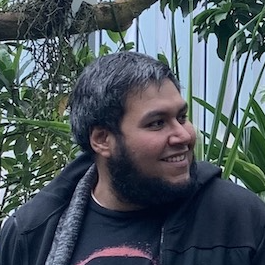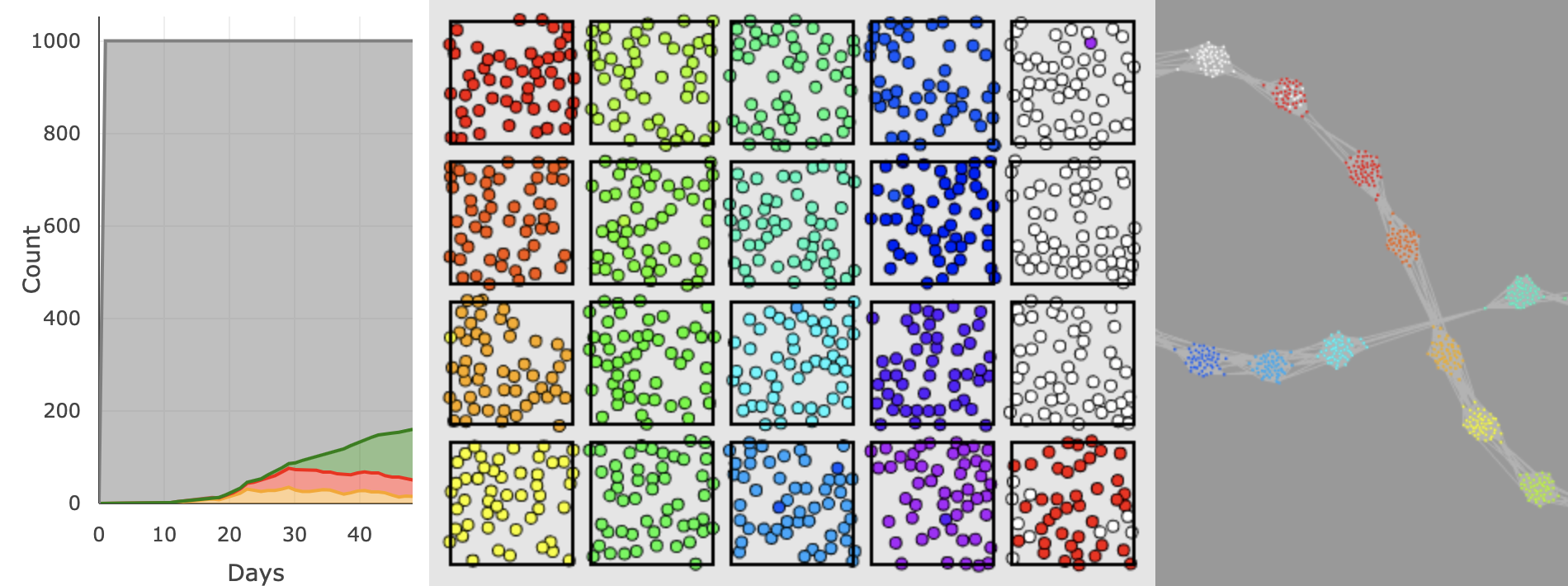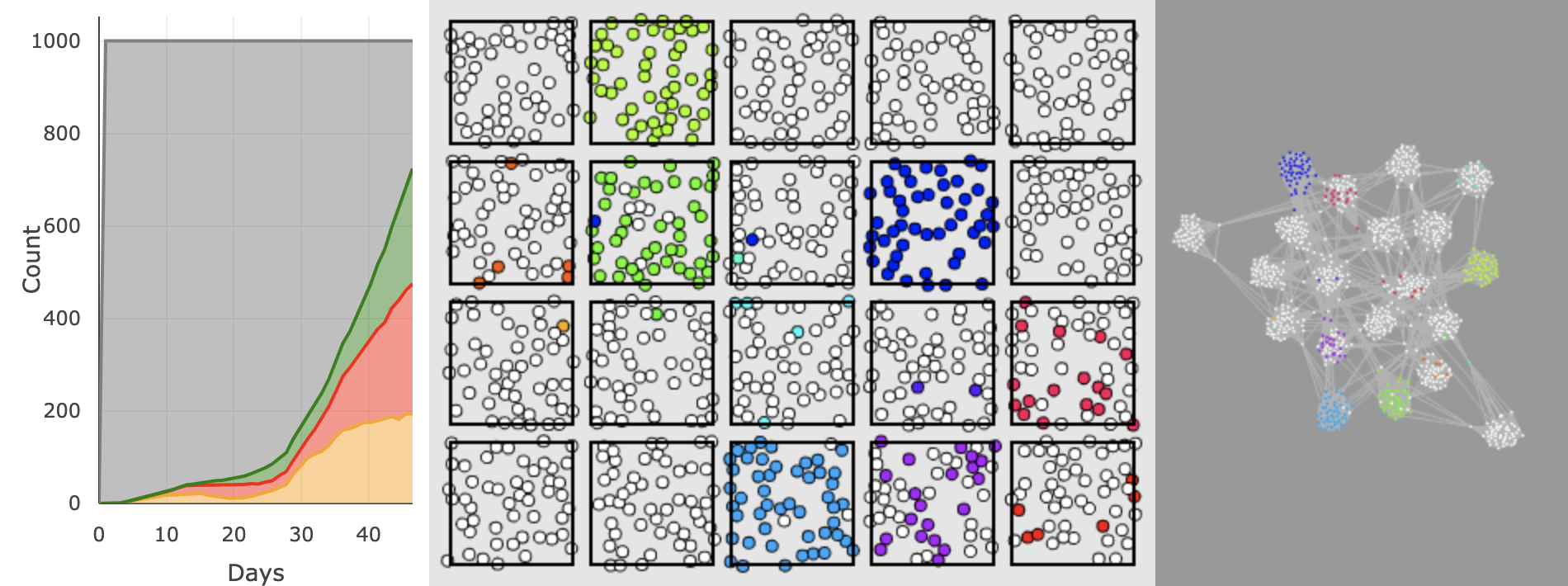It's a Small World
Most of the time that's a good thing
In the last walk through, we built up our web based pandemic simulator. We added multiple locations (Subpopulations) and experimented with how the spread of a pathogen was affected by having a few random visitors moving between them (Migration). This time we're going to extend the model a bit further. You will get to investigate how including more realistic kinds of movement between locations speeds up or slows down the spread of a disease.
First, we have to add even more subpopulations.
Right now, agents only move around in their own location. Let's start by adding some Local visitors.
disclaimer I am not an Epidemiologist or Public Health expert. This is not designed to be a predictive simulation of COVID-19. It is a simple model to understand and visualize basic disease dynamics.



